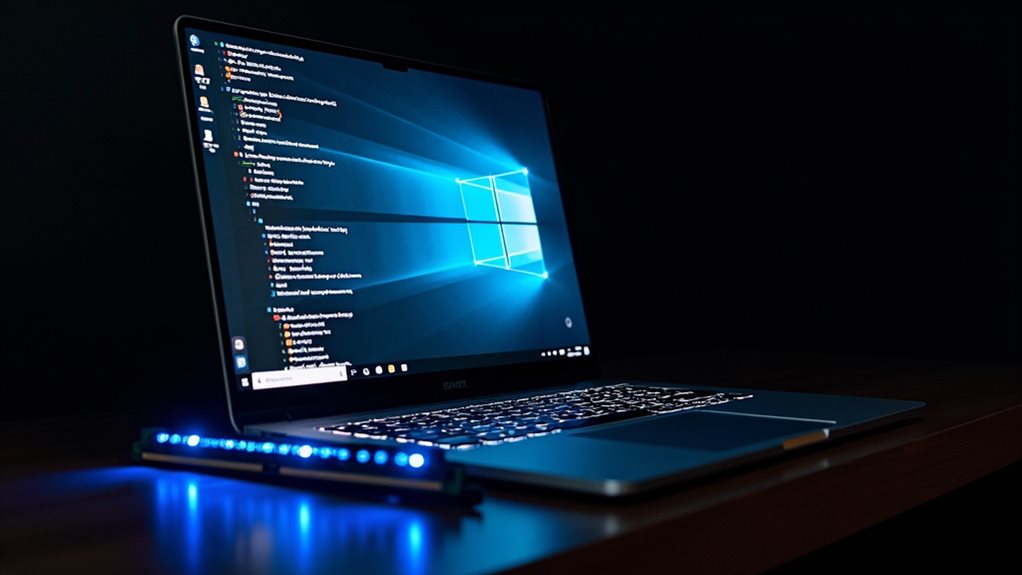Microsoft Edge often hogs RAM thanks to multiple open tabs and extensions. Think of it as a party where the tabs just won’t leave. Users can reclaim control through features like Sleeping Tabs and Efficiency Mode. Experts suggest clearing cookies regularly and monitoring hardware acceleration settings. Remember, a cluttered browser burdens performance. Want to take your RAM management to the next level? There’s more to explore to keep Edge in check.

A standout tool in the Edge arsenal is the Efficiency Mode, which dynamically reduces background activity and ensures that inactive tabs don’t monopolise memory. Imagine it as a friendly but firm librarian who whispers “shh” as a way to maintain order. Found under Settings > System and Performance, this feature can be fine-tuned to operate whenever the device is plugged in or solely on battery.
Coupled with the Sleeping Tabs feature, it automatically suspends idle tabs after a predetermined time, reinforcing the motto: “Out of sight, out of mind.” Visually, these sleeping tabs fade, providing a gentle reminder of what’s been temporarily set aside.
Yet a bit of caution is warranted when it comes to hardware acceleration. While this capable feature offloads management to the GPU for smoother performance, it can likewise pull on RAM more than expected. Users might find it beneficial to disable “Use graphics acceleration when available” to ease the memory strain.
Additionally, turning off Startup Boost—often overlooked—can transform Edge from a RAM-hungry beast into a lean browsing machine. Why let a browser run perpetually in the background, ready to leap into action, when the prize is a more responsible handling of memory resources? Resource controls for RAM allocation can also be adjusted to manage how much memory Edge utilizes effectively. Regularly clearing cookies can help to keep this memory management in check.
The dusty corners of browser caches can also be traps for excess RAM. Just like an attic filled with unnecessary clutter, clearing out cached files is crucial. A quick stroll through the Clear Browsing Data panel (shortcut Ctrl + Shift + Delete) can breathe new life into Edge’s performance.
Yet, caution is warranted as clearing cookies may require re-login on favourite sites—an annoyance, but a small price for better efficiency.
Managing tabs is another crucial area; each open tab is like a houseguest. Some can stay, while others need to go. Edge even includes a handy Task Manager feature for users to monitor which tabs are hogging the spotlight.
Users should develop the habit of closing unnecessary tabs, grouping similar ones, or even utilising the Performance Detector Tool to ferret out those resource-hogging culprits—less a detective story and more a benefit to one’s browsing health.
Lastly, extensions can really creep up on users, consuming precious memory without mercy. Regularly reviewing and pruning away the unnecessary—and sometimes poorly optimised—plugins will lighten the load appreciably. These improvements can be fantastic, but the aim is to keep the browsing experience streamlined.
Final Thoughts
Microsoft Edge can consume a significant amount of RAM, but with the right updates and settings adjustments, you can optimize its performance. By making these tweaks, you can ensure smoother browsing and enhance your device’s speed and efficiency. If you’re feeling overwhelmed by Edge’s resource usage, the Emotional Computer team is here to assist you. Our experts can help you implement strategies to minimize memory consumption and improve your overall browsing experience. Don’t let your device slow down—take control today! Click on our “Contact Us” page to get in touch with us for further assistance.

